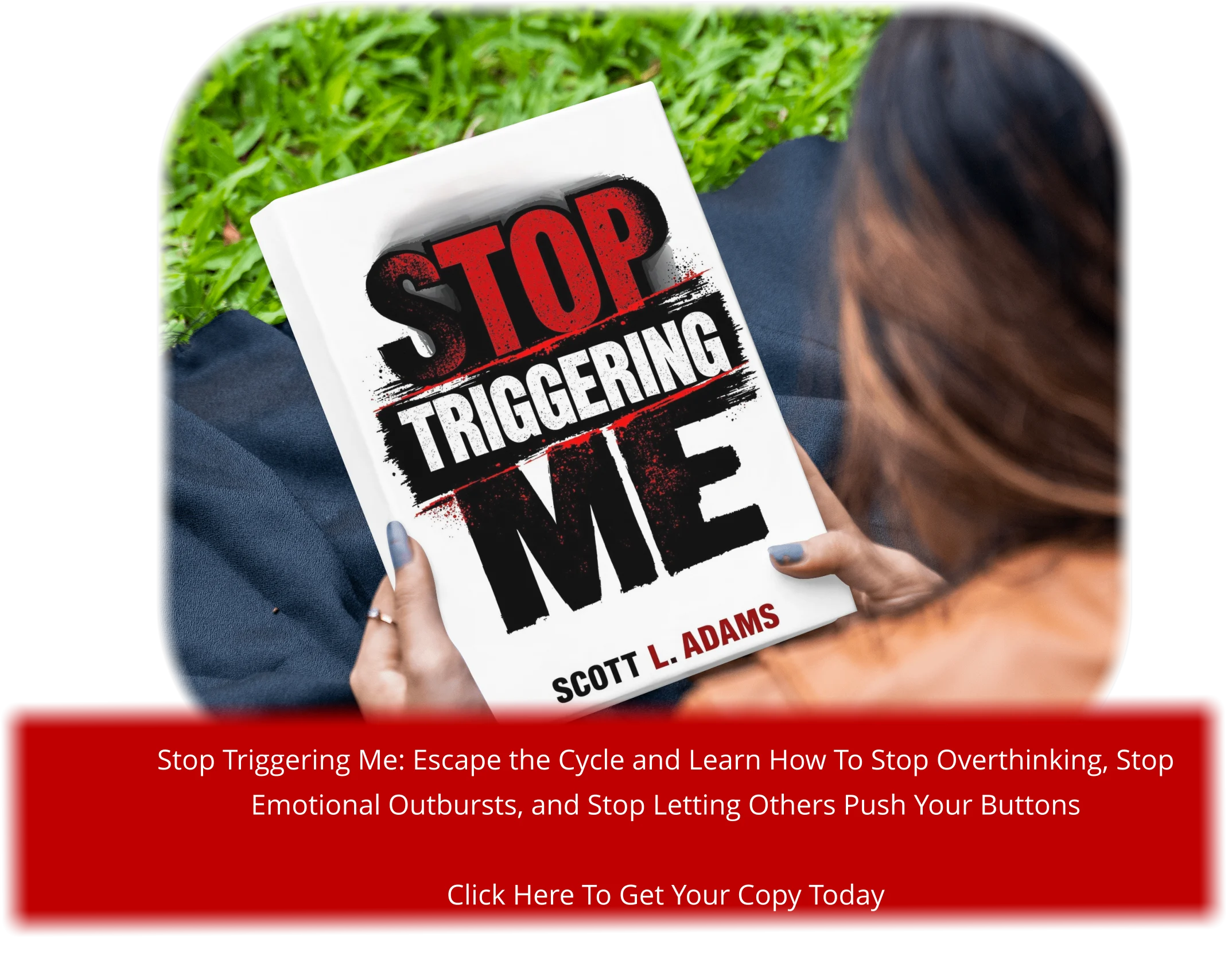I’ve experienced the overwhelming rush of a panic attack firsthand, and I know how terrifying they can be when they first strike. A panic attack is a feeling of sudden and intense anxiety that can be frightening and happen without warning.
When you’re anxious or scared, your body releases stress hormones like adrenaline and cortisol. Most panic attacks last from 5 to 30 minutes, leaving you feeling shaken and searching for answers.
In this comprehensive guide, I’ll share both my personal journey with panic attacks and evidence-based strategies that have helped me regain control. We’ll explore what happens during a panic attack, why your body reacts the way it does, and how to recognize early warning signs.
Key Takeaways
- Understand what a panic attack is and how it affects your body.
- Learn to recognize the early warning signs of a panic attack.
- Discover immediate coping techniques to help during an attack.
- Explore long-term strategies to reduce the frequency and intensity of panic attacks.
- Find out when it might be time to seek professional help for managing panic attacks.
What Are Panic Attacks?
Panic is a universal human experience that can be both unsettling and enlightening. While a little anxiety can be beneficial, too much can disrupt daily life. I’ve learned that understanding panic attacks is crucial to managing them.
Defining Panic Attacks and Panic Disorder
A panic attack is a sudden surge of overwhelming anxiety and fear that can be debilitating. Panic disorder is diagnosed when these attacks become recurring and significantly impact daily life. I’ve experienced this firsthand, and it’s essential to differentiate between isolated panic attacks and a more chronic condition.
Many people experience panic attacks during significant life transitions or periods of stress. For instance, my first panic attack occurred during a particularly demanding time at work. Understanding that panic attacks can be triggered by various factors helps in managing them.
How Common Are Panic Attacks?
Panic attacks are more common than most people realize, affecting individuals from all walks of life. Research indicates that up to 35% of people will experience at least one panic attack in their lifetime. While panic disorder affects about 2-3% of the population, anxiety disorders, including panic disorder, are the most common mental health conditions in the United States, impacting roughly 40 million adults.
Recognizing the prevalence of panic attacks can help those affected feel less isolated. I’ve found comfort in knowing that I’m not alone in this struggle, and understanding the condition has been a significant step in my journey towards managing panic attacks.
Recognizing the Symptoms of Panic Attacks
Panic attacks manifest through a variety of physical and emotional symptoms that can be overwhelming. When I experienced my first panic attack, I was caught off guard by the intensity of the symptoms.
Physical Symptoms
Physical symptoms of panic attacks can be quite alarming. They include a racing heart rate, sweating, and nausea. During a panic attack, your body may feel like it’s in a state of emergency, making it hard to catch your breath or think clearly. I’ve experienced a racing heart that felt like it was pounding out of my chest.
Mental and Emotional Symptoms
Mental and emotional symptoms are just as significant as physical ones. You might feel an overwhelming sense of fear or dread, a feeling of being disconnected from reality, or a fear of losing control. These symptoms can be very distressing, making you feel like you’re losing your grip on reality.
Duration and Intensity of Symptoms
Most panic attacks last between 5 to 30 minutes, peaking within 10 minutes. The intensity can vary; some attacks are mild with just a few symptoms, while others are completely debilitating. Understanding that panic attacks are not dangerous and will pass can provide some comfort. I’ve learned that while the acute panic attack typically lasts less than 30 minutes, the lingering effects like fatigue and heightened anxiety can last for hours.
Recognizing the symptoms and understanding their duration can help you cope better. It’s reassuring to know that panic attacks, although frightening, are not harmful.
Common Triggers and Causes
Understanding what triggers panic attacks is crucial for managing them effectively. When you’re anxious or scared, your body releases stress hormones like adrenaline and cortisol, which can cause physical symptoms such as an increased heart rate and sweating. In some people, this can lead to a panic attack.
External Triggers
External triggers are situations or events that can cause a panic attack. For me, certain situations became triggers – like being in crowded places or experiencing stressful events. Identifying these triggers is key to managing panic attacks. Some common external triggers include:
- Stressful situations or events
- Fear-inducing situations, like public speaking or being in crowded areas
- Major life changes or transitions
Internal Triggers and Biological Factors
Internal triggers, on the other hand, are related to your internal state or biological factors. I discovered that certain bodily sensations, like a slightly elevated heart rate, could trigger a panic attack. Other internal triggers and biological factors include:
- Caffeine consumption, which can make you jittery and trigger a panic attack
- Hormonal changes, such as those experienced during the menstrual cycle
- Sleep deprivation, which can lower your threshold for panic
- Genetic predisposition to anxiety disorders, as seen in some families
- Certain medical conditions that can mimic or trigger panic attacks
By understanding both external and internal triggers, you can take the first step towards managing your panic attacks effectively.
Effective Strategies for Managing Panic Attacks
Panic attacks can be overwhelming, but there are several effective strategies to manage them. By combining immediate coping techniques with long-term lifestyle changes, you can reduce the frequency and intensity of panic attacks.
Immediate Coping Techniques
When a panic attack strikes, having immediate coping techniques can help calm your mind and body. Two effective methods are breathing exercises and grounding techniques.
Breathing Exercises
Breathing exercises can help slow down your heart rate and reduce the physical symptoms of a panic attack. Deep breathing involves taking slow, deliberate breaths in through your nose and out through your mouth. This can help calm your nervous system.
Grounding Techniques
Grounding techniques help you focus on the present moment, distracting you from the panic. One technique is to notice the sensations in your feet touching the ground, or to identify the objects around you. This can help you feel more connected to your surroundings.
Lifestyle Changes to Reduce Panic Attacks
In addition to immediate coping techniques, making certain lifestyle changes can help reduce the frequency of panic attacks. Regular exercise, healthy eating habits, and avoiding triggers like caffeine and alcohol are all beneficial.
Regular Exercise and Physical Activity
Regular exercise is known to reduce stress and anxiety, which can contribute to panic attacks. Physical activity can help release endorphins, which improve your mood and overall sense of well-being.
Healthy Eating Habits
Maintaining healthy eating habits is also crucial. Some foods and additives can trigger anxiety symptoms. Keeping a food journal can help you identify specific triggers. For example, eliminating caffeine and being mindful of hidden sources in tea, chocolate, and certain medications can make a significant difference.
Avoiding Triggers Like Caffeine and Alcohol
Avoiding substances like caffeine and alcohol is important, as they can disrupt sleep and cause rebound anxiety. Creating substitute rituals, such as replacing coffee with herbal tea, can help maintain comforting routines without the anxiety-inducing substances.
- Eliminating caffeine was one of the most difficult but effective changes I made by gradually reducing my intake.
- Limiting alcohol consumption to occasional social drinks made a big difference in my anxiety levels.
- I discovered that some people are more sensitive to caffeine than others, and even small amounts could trigger panic.
Professional Treatment Options
Professional treatment options can significantly alleviate the symptoms of panic attacks and panic disorder. When dealing with anxiety and panic, it’s essential to explore various therapies and medications that can help manage symptoms.
Therapy Approaches for Panic Attacks
Cognitive Behavioral Therapy (CBT) is a highly effective approach for managing panic attacks. CBT helps individuals understand and change their thought patterns and behaviors that contribute to their anxiety and panic. Through CBT, people can learn coping skills and strategies to reduce the frequency and intensity of panic attacks.
Medication Options
Medications such as Selective Serotonin Reuptake Inhibitors (SSRIs) are commonly prescribed for panic disorder. SSRIs can significantly reduce the frequency and intensity of panic attacks over time. Other options like benzodiazepines may provide immediate relief but are generally recommended for short-term use due to their potential for dependence.
It’s crucial to work closely with healthcare providers to find the right treatment plan, whether it involves therapy, medication, or a combination of both.
Conclusion: Living Well Despite Panic Attacks
With the right mindset and support, it’s entirely possible to reclaim your life from panic attacks and live fully again. My journey has taught me that recovery isn’t about eliminating anxiety completely, but about building a life where panic no longer controls my choices. By viewing panic attacks as temporary experiences rather than emergencies, I’ve found a transformative shift in my mental health.
Building a support network and practicing self-compassion have been crucial in my recovery. These strategies, along with professional help, have helped me manage panic attacks effectively. Remember, setbacks are a normal part of recovery, but with persistence and the right tools, you can overcome panic disorder and improve your overall mental health.









